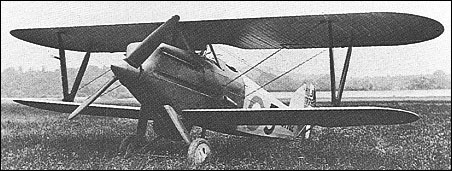|
| Representing an attempt to design the smallest and
lightest practical airframe around the most powerful
available engine suitable for fighter installation, the
Hornbill was built to Specification 7/24 and flown in late
summer 1925. Of mixed construction, with a duralumin-skinned
steel tube forward fuselage and fabric-covered
rear fuselage, wings and tail surfaces, the Hornbill was
at first powered by an 826hp Rolls-Royce Condor III
eight-cylinder water-cooled inline engine with twin
radiators under the lower wing. In May 1926, it flew
with a 698hp Condor IV and a single ventral radiator. It
possessed an armament of one 7.7mm Vickers
Mk 2 machine gun. The Hornbill was the fastest
armed aircraft to have been tested by the RAF when it
commenced service evaluation at Martlesham Heath in
late 1925, but rate of climb and service ceiling were
poor and some handling aspects unsatisfactory. In consequence
no production order materialised.
 | A three-view drawing (600 x 415) |
| WEIGHTS |
| Take-off weight | 1732 kg | 3818 lb |
| Empty weight | 1349 kg | 2974 lb |
| DIMENSIONS |
| Wingspan | 9.45 m | 31 ft 0 in |
| Length | 8.11 m | 27 ft 7 in |
| Height | 2.95 m | 10 ft 8 in |
| Wing area | 29.49 m2 | 317.43 sq ft |
| PERFORMANCE |
| Max. speed | 301 km/h | 187 mph |
| Cruise speed | 220 km/h | 137 mph |
| Ceiling | 6920 m | 22700 ft |
|
Do you have any comments?
|
| 
COMPANY
PROFILE
All the World's Rotorcraft
|







